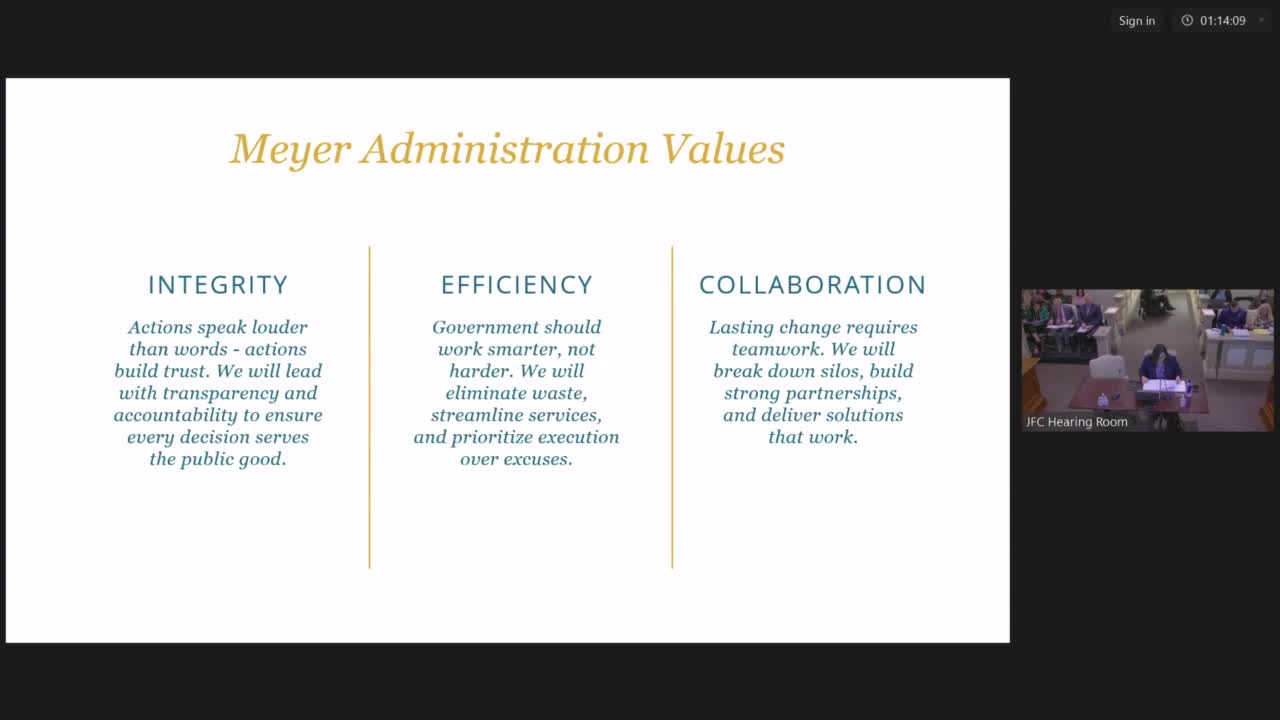Public Health requests targeted increases: animal cruelty, lead remediation, Birth‑to‑3 and EMS data systems
February 26, 2025 | 2025 Legislature DE Collection, Delaware
This article was created by AI summarizing key points discussed. AI makes mistakes, so for full details and context, please refer to the video of the full meeting. Please report any errors so we can fix them. Report an error »

The Delaware Division of Public Health presented a package of targeted line‑item requests and new initiatives to the Joint Finance Committee on May 20. Director Steven Blessing summarized FY2026 requests and performance priorities, while stressing continued preparedness work and reach of mobile health units.
Key line items and initiatives
- Animal cruelty caseload growth: $400,000 to support investigation, sheltering and associated shelter costs. DPH reported routine seizures of roughly 500 animals per year and estimated per‑animal sheltering costs at about $700.
- Childhood lead: $2,500,000 one‑time for residential lead remediation and $1,000,000 for lead poisoning prevention upgrades (case management, software and environmental inspections). DPH said it has completed two remediations and has several more lined up as it scales the program.
- Birth‑to‑3 expansion: $2,227,200 in general funds to support growth (DPH cited a 20.5% claims increase and the impact of Aiden’s Law and updated screening mandates).
- Emergency Medical Services (EMS) systems: $50,000 to support EMS data and software systems including the statewide cardiac arrest registry (CARES) and trauma registries.
- Mobile units and telehealth: DPH plans expanded mobile services to reach vulnerable populations (unhoused, those unable to visit clinics) and piloted telehealth options for primary care, chronic care and prenatal access in Sussex County.
Why this matters: DPH framed these investments as targeted, operational requests intended to address measurable caseload growth, public‑safety and surveillance capacity. Director Blessing emphasized lead remediation and data systems as investments that both protect children and improve response capabilities.
Questions from lawmakers: Committee members asked about coordination with DNREC on PFAS funding, the Office of Animal Welfare’s safety and communications with law enforcement, and the Smart Food pilot operating through Social Services. DPH said it has a dedicated PFAS project team in environmental health and was working with DNREC; it also said OAW officers have ballistic vests, mace and tasers and that communications improvements are in progress.
Follow up: DPH committed to provide more detail on PFAS work, shelter contract costs, and evidence about the effectiveness and rollout schedule of the residential lead remediation program.
Key line items and initiatives
- Animal cruelty caseload growth: $400,000 to support investigation, sheltering and associated shelter costs. DPH reported routine seizures of roughly 500 animals per year and estimated per‑animal sheltering costs at about $700.
- Childhood lead: $2,500,000 one‑time for residential lead remediation and $1,000,000 for lead poisoning prevention upgrades (case management, software and environmental inspections). DPH said it has completed two remediations and has several more lined up as it scales the program.
- Birth‑to‑3 expansion: $2,227,200 in general funds to support growth (DPH cited a 20.5% claims increase and the impact of Aiden’s Law and updated screening mandates).
- Emergency Medical Services (EMS) systems: $50,000 to support EMS data and software systems including the statewide cardiac arrest registry (CARES) and trauma registries.
- Mobile units and telehealth: DPH plans expanded mobile services to reach vulnerable populations (unhoused, those unable to visit clinics) and piloted telehealth options for primary care, chronic care and prenatal access in Sussex County.
Why this matters: DPH framed these investments as targeted, operational requests intended to address measurable caseload growth, public‑safety and surveillance capacity. Director Blessing emphasized lead remediation and data systems as investments that both protect children and improve response capabilities.
Questions from lawmakers: Committee members asked about coordination with DNREC on PFAS funding, the Office of Animal Welfare’s safety and communications with law enforcement, and the Smart Food pilot operating through Social Services. DPH said it has a dedicated PFAS project team in environmental health and was working with DNREC; it also said OAW officers have ballistic vests, mace and tasers and that communications improvements are in progress.
Follow up: DPH committed to provide more detail on PFAS work, shelter contract costs, and evidence about the effectiveness and rollout schedule of the residential lead remediation program.
View full meeting
This article is based on a recent meeting—watch the full video and explore the complete transcript for deeper insights into the discussion.
View full meeting
